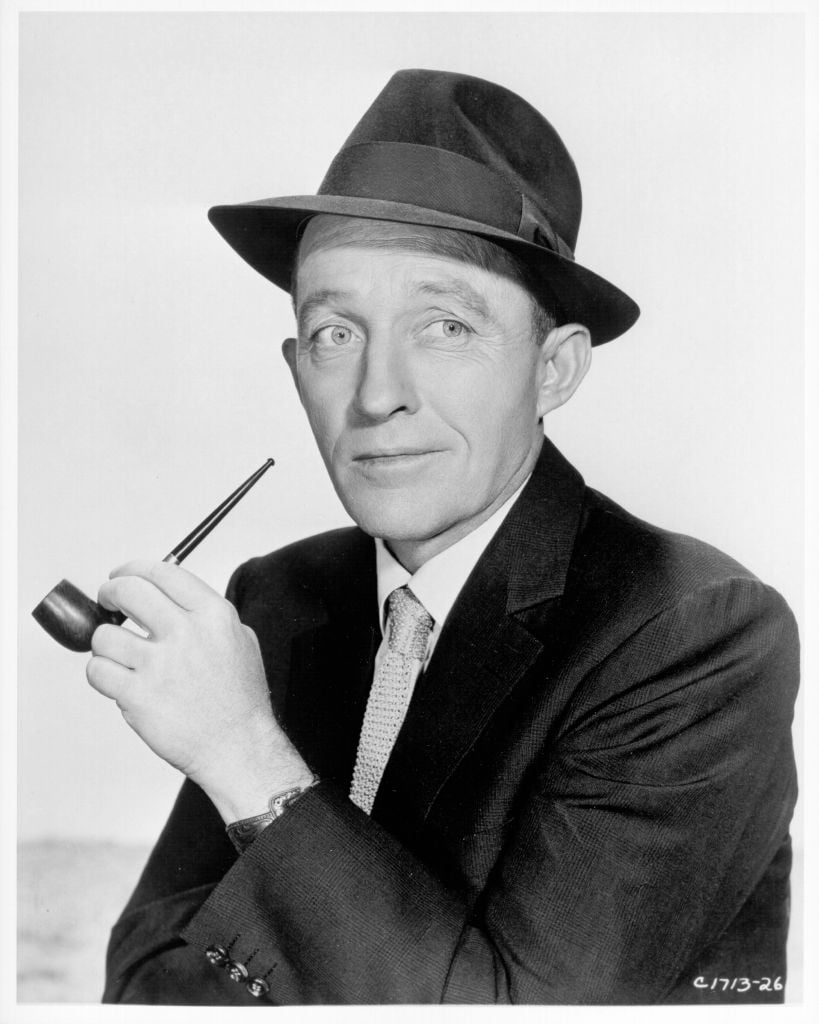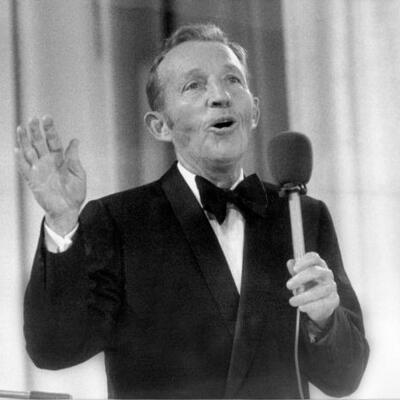Bing Crosby at a Glance
- Categories: Celebrities, Celebrities > Singers
- Net Worth: $50 Million
- Birthdate: May 3, 1903 - Oct 14, 1977 (74 years old)
- Birthplace: Tacoma
- Gender: Male
- Profession: Singer, Actor, Golfer, Singer-songwriter, Film Producer, Entrepreneur
- Nationality: United States of America
- Height: 5 ft 6 in (1.7 m)
Bing Crosby: The Life, Legacy, and Net Worth of a Timeless Entertainer
What Was Bing Crosby’s Net Worth?
Bing Crosby, a name synonymous with smooth vocals and timeless entertainment, amassed a significant fortune during his illustrious career. At the time of his death in 1977, his net worth was an impressive $50 million, a figure that reflects the immense popularity and financial success he achieved. Adjusted for inflation, this sum underscores Crosby’s status as one of the most influential and financially successful entertainers of the 20th century. His impact transcended mere financial gain; he shaped the landscape of music, film, and broadcasting, leaving an indelible mark on American culture.
Early Life and Influences
Born Harry Lillis Crosby on May 3, 1903, in Tacoma, Washington, Bing Crosby’s early life was marked by a move to Spokane, Washington, where his formative years were spent. This environment shaped his character and perhaps laid the groundwork for his future career. A pivotal moment in Crosby’s youth was his summer job in 1917 as a property boy for Spokane’s Auditorium. This exposure to the era’s leading performers, including the electrifying Al Jolson, ignited a passion for entertainment within the young Crosby. Jolson’s dynamic stage presence, marked by adlibs and parodies, left a lasting impression, influencing Crosby’s approach to performance. Crosby’s experience with Jolson’s ad-libs and spontaneity, combined with the impact of Hawaiian music, helped shape his unique style.
Crosby graduated from Gonzaga High School in 1920 and subsequently enrolled at Gonzaga University. Though he only attended for three years, the university later honored him with an honorary doctorate in 1937, a testament to his significant achievements. Today, Gonzaga University proudly houses a substantial collection of Crosby memorabilia, including photographs, correspondence, and various materials that offer a glimpse into the life of this iconic figure. These materials serve as a rich resource for those seeking a deeper understanding of Crosby’s life and career.
The Rise of a Showbiz Icon
Bing Crosby’s showbiz career coincided with significant innovations in recording technology, which profoundly influenced his singing style. His relaxed, conversational approach to singing, often described as “crooning,” distinguished him from the more forceful “belting” style prevalent at the time. This distinctive style would, in turn, influence numerous artists who followed. Crosby’s impact extended beyond his vocal style; he was a pioneer in the development of the postwar recording industry. During a time when radio stations were hesitant to embrace recorded content, Crosby, working for NBC, recognized the potential of pre-recorded shows, even though they were lower quality than live broadcasts. Finding NBC resistant to recording, he moved to ABC, which was more receptive to his forward-thinking ideas. There, he made history by pre-recording his radio shows and commercials onto magnetic tape, a groundbreaking move that revolutionized the industry. He embraced new technology, pushing the boundaries of what was possible in broadcasting and recording.
His performance in the 1944 film “Going My Way” earned him an Academy Award for Best Actor. His contributions to the film industry continued to be recognized, with another Oscar nomination in 1945 for “The Bells of St. Mary’s.” It wasn’t until 1963 that Crosby received a Grammy Award nomination, demonstrating the longevity and continued recognition of his contributions. Crosby’s vocal style played a crucial role in popularizing singing beyond the traditional, often theatrical, style associated with performers like Al Jolson and Billy Murray, who were accustomed to projecting their voices to reach the back rows of large theaters without microphones. Music critic Henry Pleasants, in his book “The Great American Popular Singers,” noted the emergence of a new style in American music, marked by a conversational ease. This style, often described as “singing in American,” became synonymous with Crosby and was famously termed “crooning.”

(Photo by Michael Ochs Archives/Getty Images)
Crosby’s admiration for Louis Armstrong, the legendary trumpet player, significantly shaped his musical approach. Armstrong’s influence on Crosby is evident in Crosby’s evolving singing style. Demonstrating foresight, Crosby used an option in his Paramount contract in 1936 to star in independent projects, signing with Columbia and arranging for Armstrong’s inclusion in a project initially titled “The Peacock Feather” but later renamed “Pennies from Heaven.” Crosby was ahead of his time in his progressive views, insisting that Louis Armstrong receive equal billing with white co-stars. Armstrong himself expressed his appreciation for Crosby’s stance on racial equality. This collaboration not only showcased their musical talents but also their shared belief in equality and respect. Crosby’s advocacy for Armstrong was a significant step towards breaking down racial barriers in the entertainment industry.
During World War II, Crosby’s live appearances for American troops earned him the affectionate nickname “Der Bingle,” which was especially popular with his German listeners. Crosby’s efforts significantly boosted morale among American troops during WWII. A poll conducted among U.S. troops at the war’s end ranked Crosby as the most positive influence in boosting G.I. morale, surpassing figures like Franklin D. Roosevelt, General Dwight Eisenhower, and even Bob Hope. Crosby’s performances provided a much-needed respite and source of joy for those serving overseas.
The “Road to” films, including “Road to Singapore” (1940) and “Road to Zanzibar,” became hugely popular. Crosby starred in these alongside Bob Hope, adding to his already vast repertoire of successful projects. He solidified his status as a leading entertainer. His performance in “Going My Way” (1944) earned him an Academy Award for Best Actor, and he received an Oscar nomination for its 1945 sequel, “The Bells of St. Mary’s.” Crosby’s ability to excel in multiple roles, from singing to acting, contributed to his enduring appeal.
‘White Christmas’: A Holiday Classic
Bing Crosby’s performance in the 1954 Christmas movie “White Christmas” is a cornerstone of holiday traditions. The movie’s title song, “White Christmas,” is one of the most-played songs in recording history. Crosby’s version of “White Christmas” is one of the best-selling songs ever, with over 100 million copies sold worldwide. The impact of “White Christmas” extends beyond its popularity, with songwriter Irving Berlin earning approximately $65 million from the song alone. Crosby and his heirs have earned tens of millions of dollars from this iconic track, which was named the bestselling single of all time by the Guinness Book of World Records. The song continues to generate significant revenue and remains a symbol of the holiday season.
Personal Life and Tragic Death
Bing Crosby’s personal life, like his career, was widely followed by the public. In 1977, while playing golf with friends, Crosby suffered a sudden heart attack and died instantly. This tragic event marked the end of an era, leaving behind a legacy of unparalleled success and widespread admiration. Crosby was married twice. His first wife was actress Dixie Lee, and his second wife was actress Kathryn Grant. Crosby’s personal life, though sometimes overshadowed by his career, was an integral part of his overall persona. The news of his death resonated around the world, underscoring the impact he had on the entertainment industry and beyond.
A Lasting Legacy
Bing Crosby’s contributions have been formally recognized, including his induction into the National Association of Broadcasters Hall of Fame. His influence is also honored by the renaming of the former Metropolitan Theater of Performing Arts (‘The Met’) as “The Bing Crosby Theater” in 2006. In recognition of his extensive fundraising efforts, the Bing Crosby Stadium in Front Royal, Virginia, was named in his honor. These honors stand as a testament to his achievements and his lasting impact on the arts, entertainment, and philanthropy. Crosby’s legacy is one of unparalleled success, innovation, and cultural influence. He continues to be celebrated and remembered for his music, his films, and his contributions to the world of entertainment. His influence is still felt today and will undoubtedly continue for many years to come.
/**/

